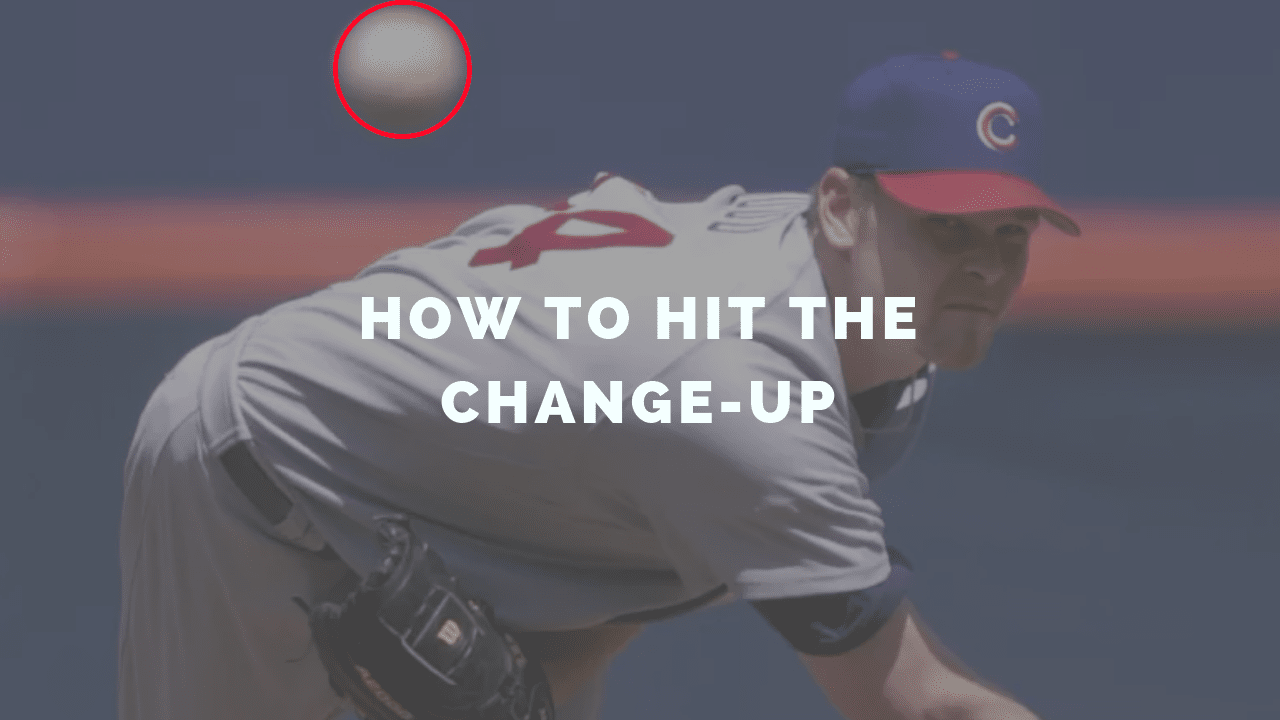 I bet you 90% of your strikeouts are either a strike three called looking because you weren’t ready to put the ball in play or chasing a ball in the dirt. I’m right, aren’t I?
I bet you 90% of your strikeouts are either a strike three called looking because you weren’t ready to put the ball in play or chasing a ball in the dirt. I’m right, aren’t I?
Here’s the truth. If you don’t learn how to: Post up, Load late, Recognize “shade”, you will underachieve when you face a pitcher who can locate and pitch off of his change-up. The change-up is the most dangerous pitch in the game. Why? Because it’s really hard to hit 93 mph and 83 mph at the same time. If you want to hit the change-up hard, you better have a great approach or have eyes like Teddy ballgame. If the approach is all you have, it better be a good one. Here’s how to get it done.
Post Up
Be aggressive on anything up in the zone. If it starts up, it’ll stay up. If it starts down, it’ll end up way down. Here’s one way to look at it – imagine a table, waist-high that’s sitting on top of the plate…anything that starts above that table, you’re gonna take a daddy hack. If it starts below that table, you’re spitting (taking) on until you have two strikes.
Why does this work? A breaking ball/offspeed pitch that starts above that table will still be a strike after it breaks or drops. If it starts below the table, it’ll probably end up in the dirt once it crosses the plate. This is called plate discipline.
Load Late
Most of your thrown away at-bats are after pulling pitches you have no business pulling. You’re not letting the ball travel enough to attack the inner-half of the ball. So you get the topspin and weak ground ball, pull-side. You might have a great swing, but it’s not translating because your approach is off. Do this instead. Push the plate back in your mind, load a little later and focus on driving the ball back up the middle. Now, you’re on time to hit the change-up and on plane to still hit the fastball, middle away to the big parts of the field.
Recognize the Shade
We all know that different pitch types have a different spin. Another way to look at it is like this. The “lighter” the pitch the slower it is. A fastball is darker to the eye because the seams are spinning faster. The change-up is the lightest because the seams are spin the slowest and in a horizontal rotation. The change-up has almost a pink tint to it since the seams are spinning slower. When trying to recognize the change-up better, anticipate a lighter shade. The lighter the shade, the slower your load and separation becomes. Your timing changes. You make an adjustment during the pitch. This is what great hitters do.
Bringing It Home
If you’re struggling with hitting the changeup, get great at posting up, loading late, and recognizing “shade”. If it’s up in the zone, it’ll end up a strike. Move the plate back in your mind and use the big part of the field. If it’s a lighter tint, it’s probably an off-speed. Make sense? Good. What’s been your approach lately with two-strikes? Let us know in the comments below.
#Seetheballbetter visit, https://gamesensesport.com to learn how.
